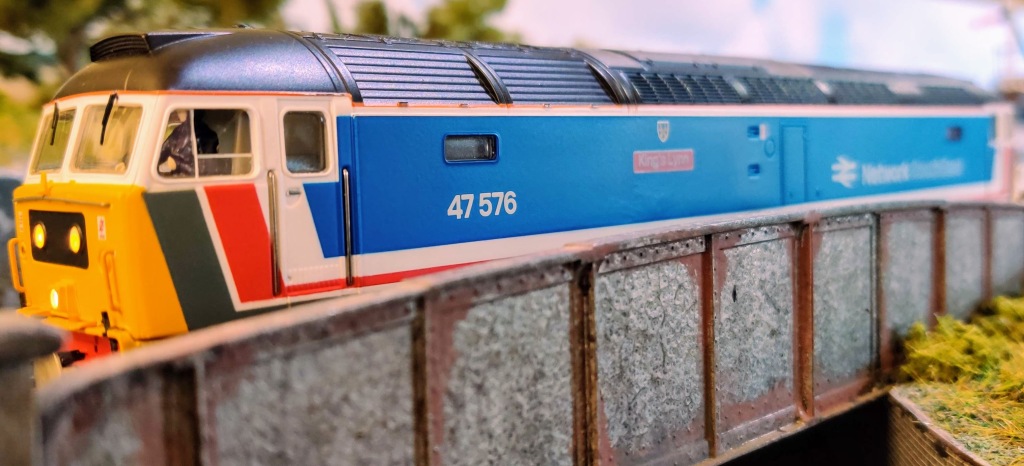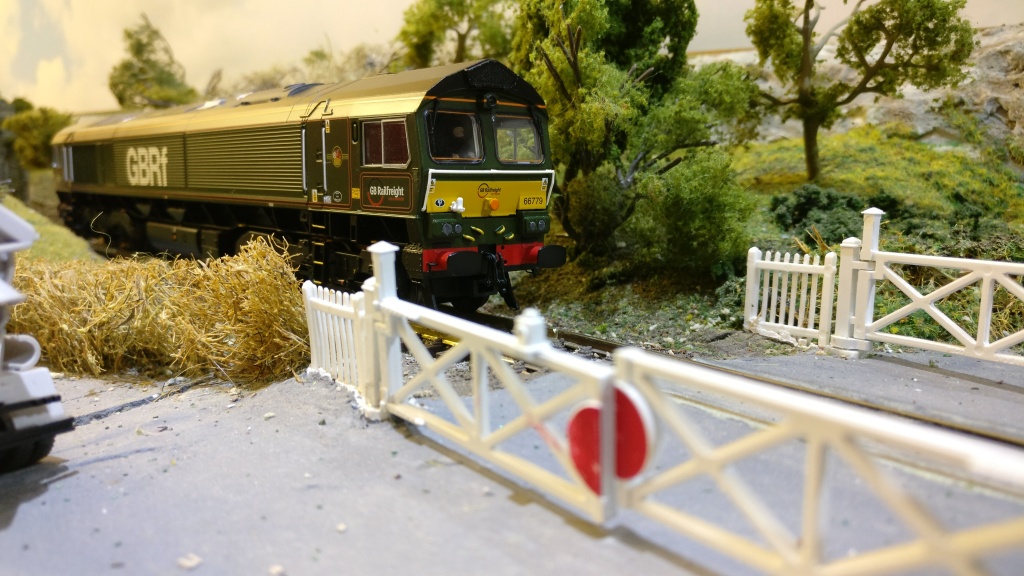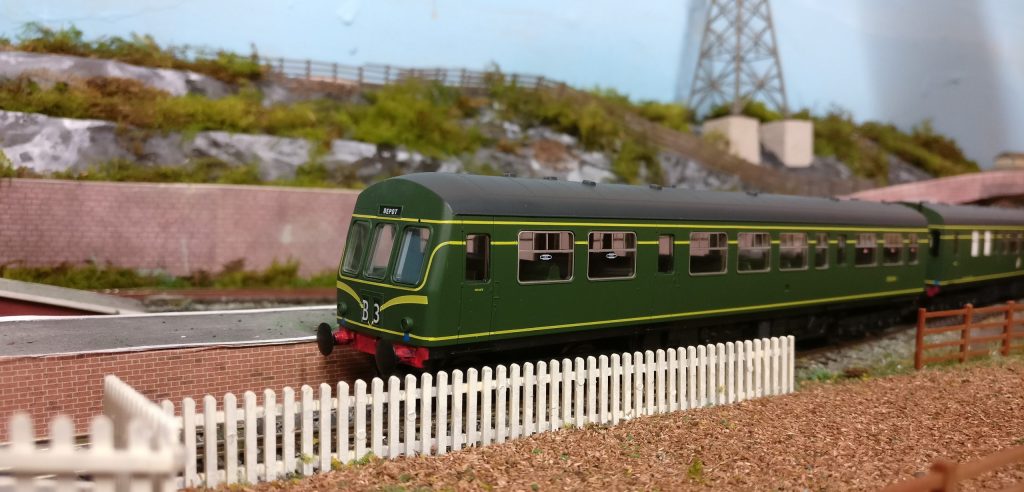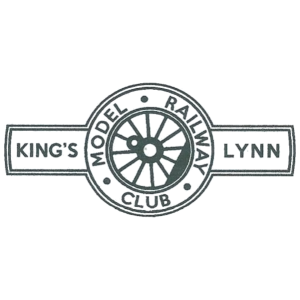Welcome to King’s Lynn Model Railway Club.
Here you find all you need to know about our club, have a look at what we do and upcoming events.
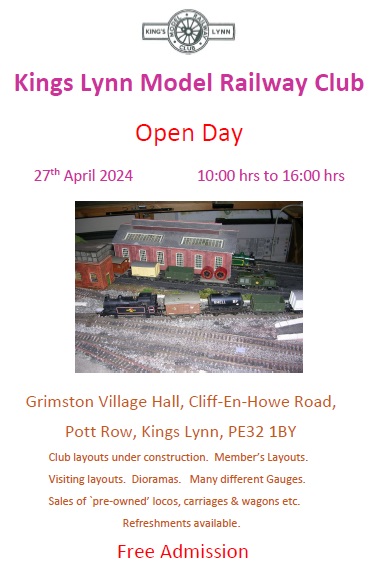
A selection of some of the layouts that will be present…
Kingsley – N Gauge DCC – portable exhibition layout.
This layout is intended to depict a preserved railway hence the footbridge access to the locomotive depot. This means that it is suitable for all sorts of rolling stock from steam to diesel and, in theory, lends itself to be available to all of the club’s N gauge modellers. However, the layout is wired for DCC operation and, at the time of writing, only two members of the club have locomotives that can be used on the layout. For that reason it is currently being operated as a late 1960s branch line that has survived the Beeching axe because it is primarily for freight. Nevertheless, we hope to recruit some new members so that we can run it as a preserved layout again in the future.

Upson Downs – N gauge Club Layout
This layout has undergone several major changes in its lifetime. It was originally designed as a portable double sided layout with a town scene on one side and a countryside scene (with viaduct) on the other. It is an elongated figure of eight. It was wired for both DCC and analogue operation. Lack of space meant that it was difficult to work on both sides of the layout and the wiring became far too complicated. As the scenery developed it also became impractical for it to be portable. As a result it has been reduced in size from 9’ x 4’ to 9’ x 3’ and the town side of the layout has been reconfigured as a six road storage yard serving the countryside scene. It has also been rewired so that the outer loop is DCC and the inner loop analogue. This makes it suitable for all of the club’s N Gauge modellers to use. The scenic side still has some work to be done. No model railway is ever truly finished!
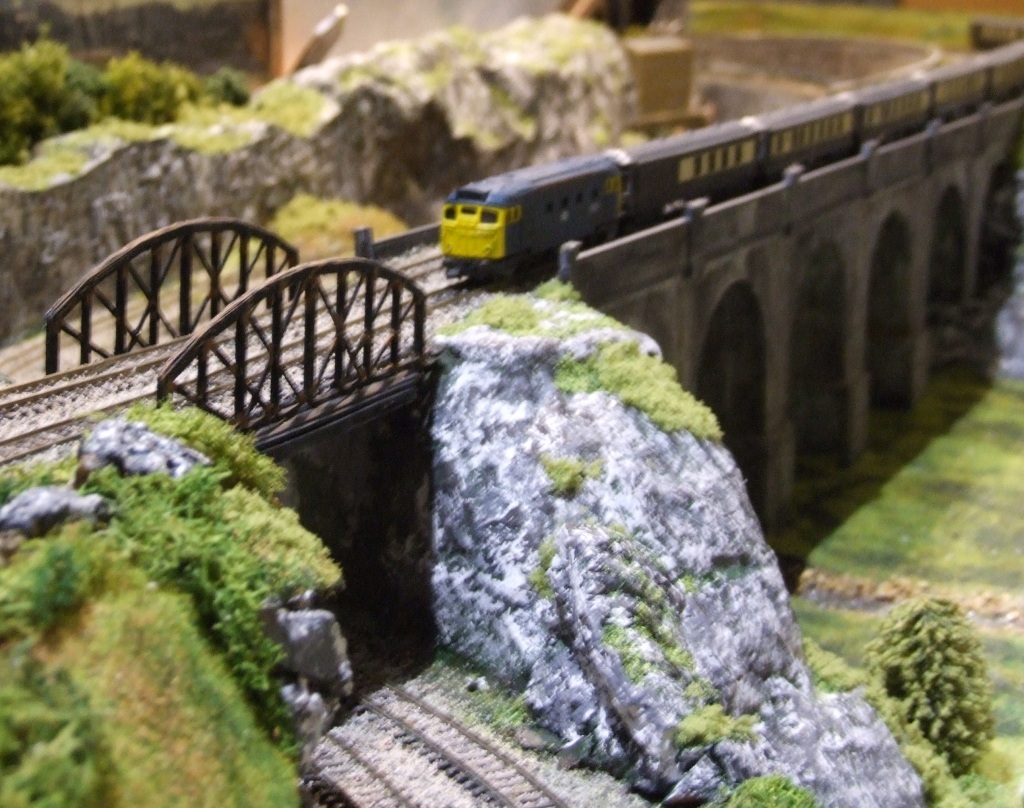
Lynton & Barnstaple – G Scale Garden Railway
The Lynton & Barnstaple was a well-equipped, well-engineered branch line – it happened to use the narrow 2ft gauge to enable it to twist and turn through spectacular Devon scenery as it climbed its way round the edge of Exmoor to Lynton and Lynmouth.
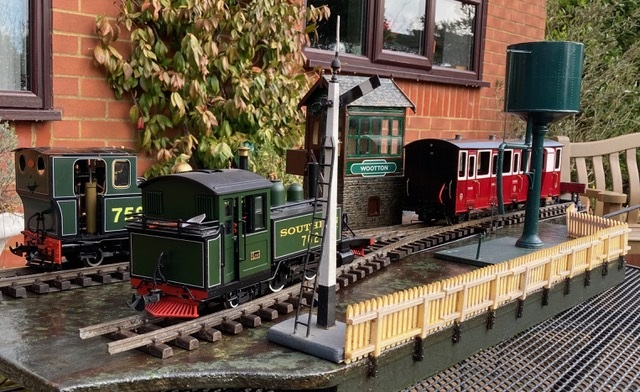
16mm/1ft scale on 32mm gauge track (the same as 0 gauge). A variation of this is “G Scale” which has models of around 16mm/1ft scale running on 45mm gauge track (the same as the less common Gauge 1). These scales are mostly used on garden layouts, as they are a bit big for most houses! Locomotives in this scale may be live steam powered, rather than the electric systems otherwise used by modellers. There are some ready-to-run models in 16mm/1ft scale, and further models available in kit form.
The Llangrymstyn Light Railway – 009 gauge layout
The Llangrymstyn Light Railway was built in 1930 as a small granite quarry railway in North West Wales linking the workers village of Llangrymstyn with the processing plant on the outskirts of the town of Llaniestyn. It not only transferred granite but also used passenger traffic to transport the workers. In 1935, with the quarry struggling, the directors decided to try and cash in on the expanding travelling public and extended the line to carry passenger traffic to the small seaside town of Abersoch. The model, which is fictional, depicts a typical quarry railway in the North Wales area around the year of 1935.
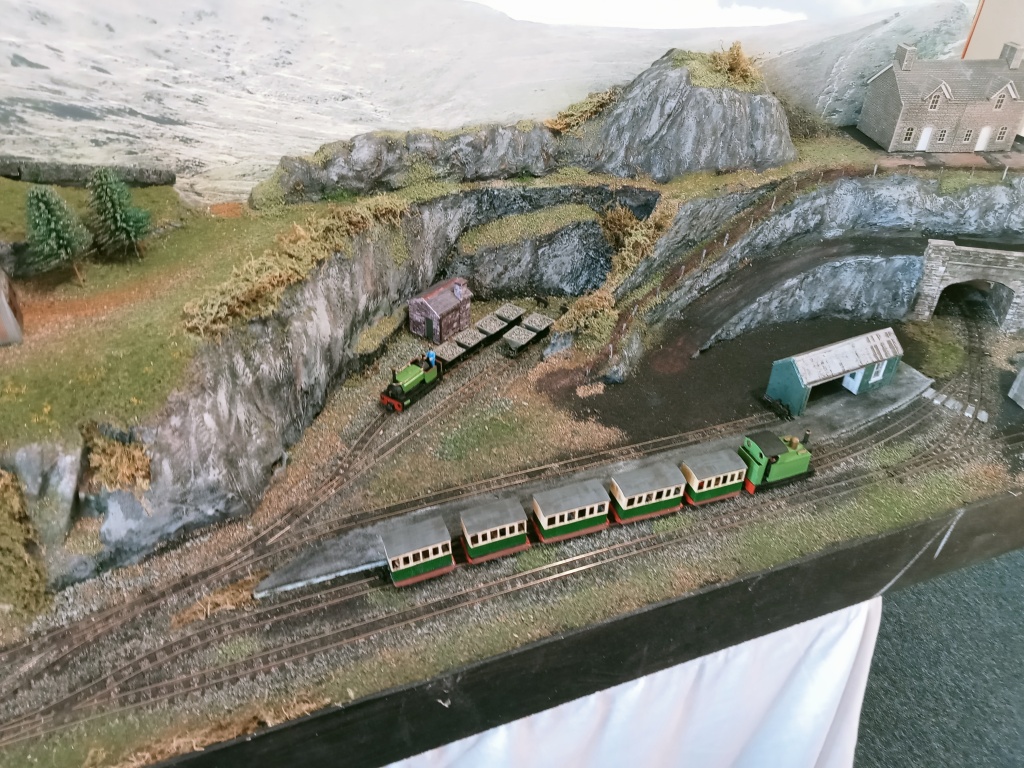
Lilliput Lane – N gauge layout
This N gauge layout is loosely based on the railways in the 1960’s… It is quite heavy, strong and inflexible, but also portable for exhibitions. The track was laid many years ago without the use of track plans . The Locomotive depot and goods yard is on a piece of MDF flooring . The design was to make the depot removable so access was possible for maintenance to the fiddle yard .
Additional scenery can be added on another MDF making it more modular . Once the track had been laid it was quite some time before buildings were added because the direction in which the layout would take was undecided .
Lilliput lane N gauge buildings, made by Lilliput Lane, were discovered in an auction, and the decision was made to make the layout with the theme of Lilliput Lane. All the N gauge Lilliput Lane buildings were acquired from various Auctions .
The railway buildings are all Minitrix, as Lilliput lane do not do those type of building. Even though the buildings are added, the layout is still not complete requiring some painting, requiring a play park for children, various fences and hedging etc.
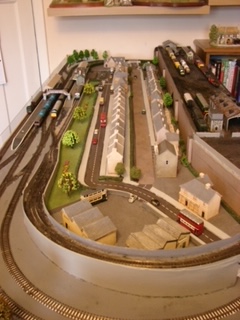
Little Lechlade 0 Gauge Fine scale (1:43.5) layout
General
Little Lechlade Station is heavily based on the real station of Lechlade in Gloucestershire, England. The station was on the Oxford, Witney and Fairford Railway, between Oxford and Fairford, it was built where the line crossed the road to Burford, 0.5 miles (0.80 km) north of Lechlade.
History
The station was opened on 15 January 1873 by the East Gloucestershire Railway. It was a simple, single-platform station, built of honey-coloured local Cotswold stone which reflected the architecture of the nearby villages. It had a goods shed served by a single siding. By the late 1920s, a signal box and a loading dock had been added. The signal box was a standard Great Western model with 17 levers and the only one on the line to have track- circuiting installed.
The goods yard contained a loop to allow trains to run-around, but this was not signalled for use by passing trains. In 1933, a ground frame locked by an electric interlocking lever from the signal box was installed at the eastern entrance to the loop and a new inner home signal was erected. It was not until the Second World War, when the line was busy with traffic for RAF Fairford, that the Great Western Railway signalled and lengthened the loop to allow two goods trains or one passenger train and one goods service to cross. A second goods siding was also added by October 1944, by which time the ground frame had been removed.
Layout Details
This 0-gauge model depicts this disused station at the end of the war era with it being compressed into a 20’ x 1.5’ space (excluding a 4’ traverser). A traverser at one end allows for marshalling of the stock without it being on display. Powered by DCC, all motive power stock is sound fitted and is controlled by a MERG system. Accessories are controlled by DCC accessories decoders allowing for wireless control of the point work and signals.
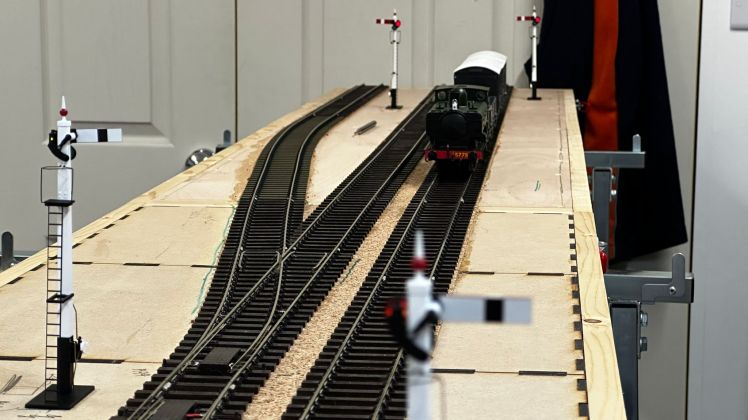

Leeds – N Gauge DC Layout
This N Gauge layout is based loosely on Leeds City station. The plan is borrowed from a layout by Hugh Flynn in Railway Modeller.
This is my first club layout, and as such is a learning experience, as most aspects are new to me. I have a large stock of analog locomotives, so the layout is built for that. The points are operated via “tube and wire” as access to most of the points will be covered by the station arch, which will run down most of the station.
All the buildings to date are from down loaded websites, and are then printed and cut out for assembly.
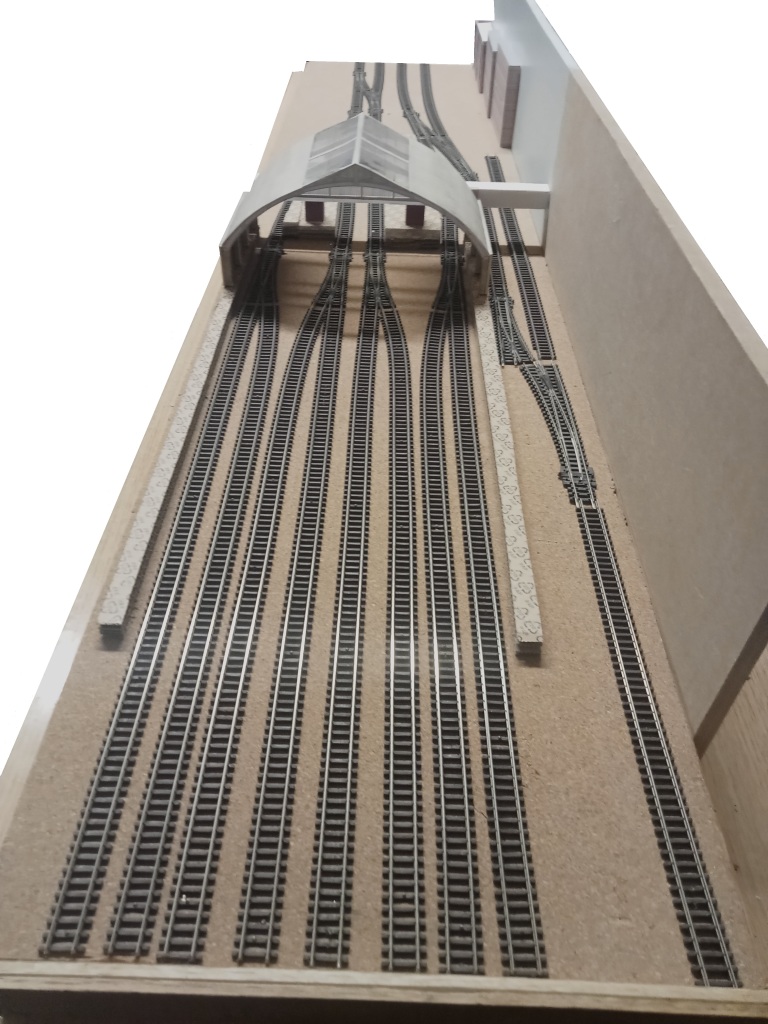
Attlynn – 00 Gauge DCC Layout
History
Attlynn Station was completed in the Autumn of 1982 after it was clear the expanding town of Kings Lynn was starting to suffer since the old South Lynn Station was closed back in 1959. A competition in the press called upon the local public to come up with a suitable name for the newly built station, and a ‘play-on-words’ approach was chosen for the newly built station – ‘Attlynn’.
The station serves as a route to Norwich and Peterborough, helping to reduce traffic on the ever busy A47 and providing an alternative to the X1 bus service.
After privatisation, the station building largely remained unchanged but went through a small modernisation program when Train Operator ‘East Midlands Trains’ took over the running of the station. The changes, which completed in the Summer of 2009 comprised of fitting a new platform canopy, increasing the size of the car park and adding the glass atrium to the front of the building.
The biggest change and one which didn’t see completion until the following year was a small refueling depot and yard built the other end of the station to help service the small fleet of DMUs that operate through Attlynn.
Whilst not as big as Kings Lynn’s main station in the town centre, it still plays a vital role in helping passengers reach the County’s Capital as well as Peterborough and beyond.
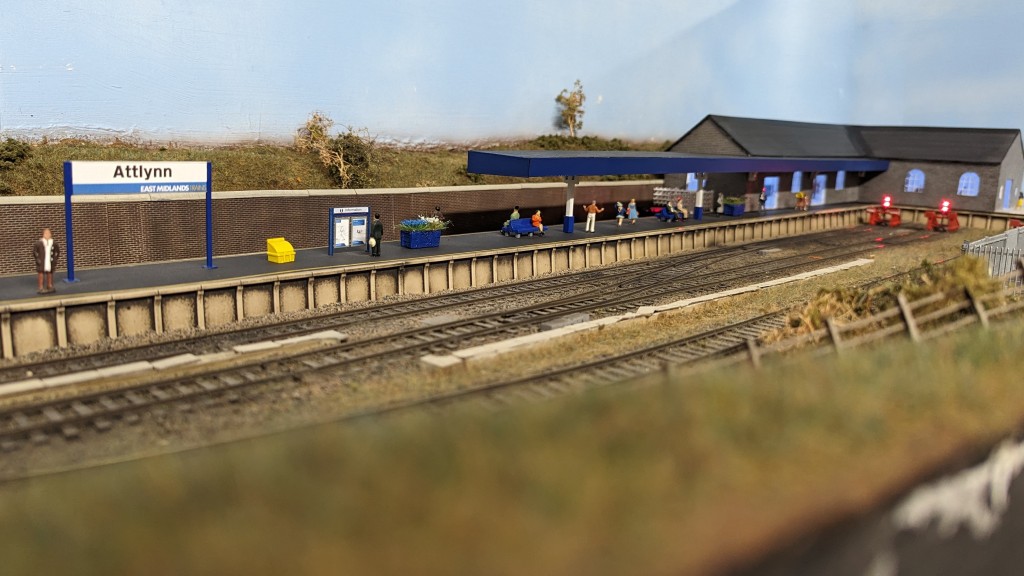
Waiting On The Harbour
“Waiting on the harbour” too unload or to be loaded.
A typical scene of a harbour between 1920-60. The scene has a small workshop building small truck and repair of other trucks. The is also a coal merchant using some of the coal from the barge together with a gang of workers most of who are in the café have breakfast.
The black engine is the basic 0-4-0 shunter. It has steel chassis, wheels and axles and is powered by a 12 volt motor. However the main part of the engine is made from cupboard, although is has been modified to take a number of extras such as remote control and a bigger battery.
The second engine is made by IP Models which is called “Jessie”. It is a 0-4-0 shunter with a metal chassis and a metal frame and is fitted with remote control.
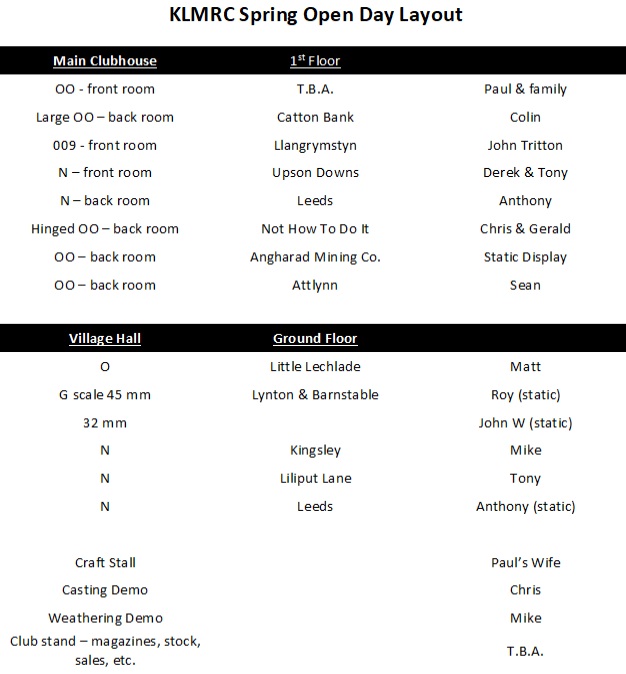
If there’s anything you’d like to know, feel free to reach out to us on our Contact Us page.
